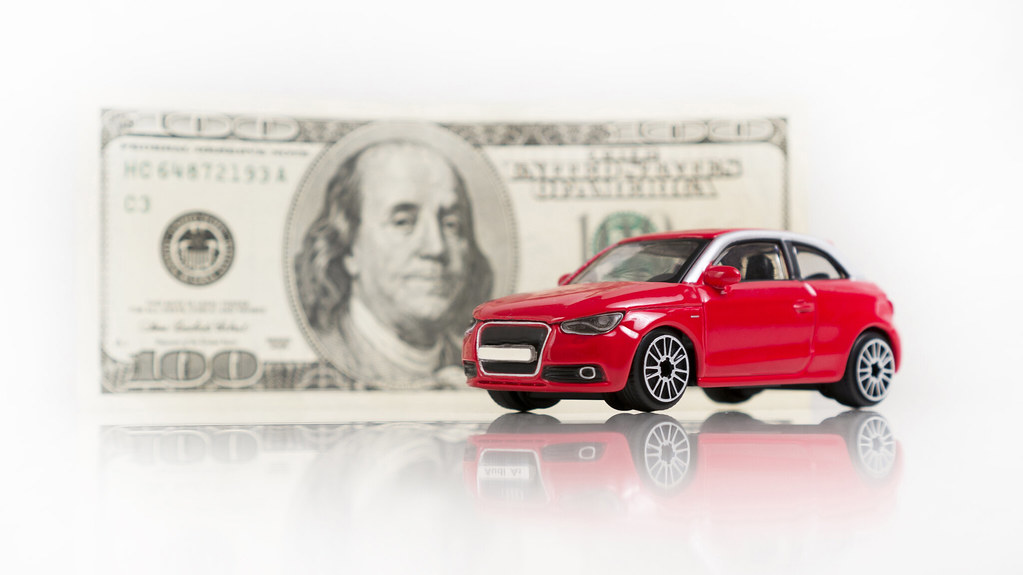
Owning a vehicle is a freedom many cherish, but the thought of continuous, high maintenance expenses can often overshadow the joy of the open road. The good news is that keeping your car in prime condition doesn’t have to drain your bank account. In fact, adopting a few proactive, hands-on strategies can ensure your vehicle runs reliably and efficiently, all while saving you a considerable sum – potentially over $1000 each year. Even the newest models benefit immensely from these simple, yet powerful, habits.
Forget the intimidating manuals and complex jargon often associated with car care. We’re here to cut through the noise and provide straightforward, actionable advice that empowers you to take charge of your vehicle’s health. These aren’t just quick fixes; they are smart, practical pointers that will not only extend your car’s lifespan but also make your daily driving experience safer and far more economical. From under the hood essentials to clever exterior touch-ups, a little attention goes a long way.
Whether you’re a seasoned gearhead or just got your license, understanding these essential maintenance hacks is invaluable. They help you address minor issues before they escalate into costly problems, fostering a sense of confidence and self-reliance. This guide will help you keep your ride in top shape, demonstrating how simple, routine checks and tasks can translate into monumental savings and peace of mind. Let’s dive into the first set of crucial hacks that form the bedrock of smart car ownership.

1. **Keep an Eye on Fluid Levels**Many drivers unfortunately wait until a glaring warning light illuminates their dashboard before even considering opening the hood. This reactive approach, however, is akin to waiting until you’re severely parched before reaching for water; by then, significant damage might already be underway. Proactive, periodic checks of your vehicle’s vital fluids are not just good practice, they are essential safeguards for performance and longevity.
Taking just a few moments to inspect your engine oil, coolant, brake fluid, power steering fluid, and even washer fluid can prevent a cascade of problems. These fluids are the lifeblood of your car’s complex systems, ensuring everything from smooth internal combustion to reliable stopping power. Neglecting their levels can lead to increased friction, overheating, and eventual component failure, which inevitably results in far more expensive repairs down the line.
Let’s start with engine oil, arguably the most critical fluid. To check it, ensure your car is parked on level ground and the engine is cool. Locate the dipstick, typically marked with a brightly colored handle, pull it out, and wipe it clean with a rag. Reinsert it fully, then pull it out again to read the level. If it’s below the minimum mark, add oil that precisely matches your manufacturer’s recommendation. Monthly checks, or before any long trip, help prevent friction and overheating, saving your engine from costly damage.
Next, consider your coolant, the unsung hero that prevents your engine from overheating in scorching traffic or freezing in winter. Always check the coolant reservoir when the engine is cold, making sure the fluid sits comfortably between the minimum and maximum marks. If topping up is needed, use a 50/50 coolant-distilled water mix as specified by your vehicle’s manual. An overheated engine can quickly ruin your day and your bank account, so proper coolant levels stabilize engine temperature and significantly extend the life of critical components.
Finally, don’t overlook brake fluid. Pop the hood and find the brake fluid reservoir, usually situated near the firewall. Verify that the fluid level remains within the suggested range marked on the container. If it’s low, top it up with the recommended fluid type. A consistently low brake fluid level can be a red flag, indicating worn brake pads or even a hidden leak within the system. Prompt action here is paramount; maintaining a healthy braking system is infinitely better than losing stopping power when you need it most.
Read more about: Don’t Get Burned: Examining 7 Compact Cars That Become Reliability Disasters at 90,000 Miles
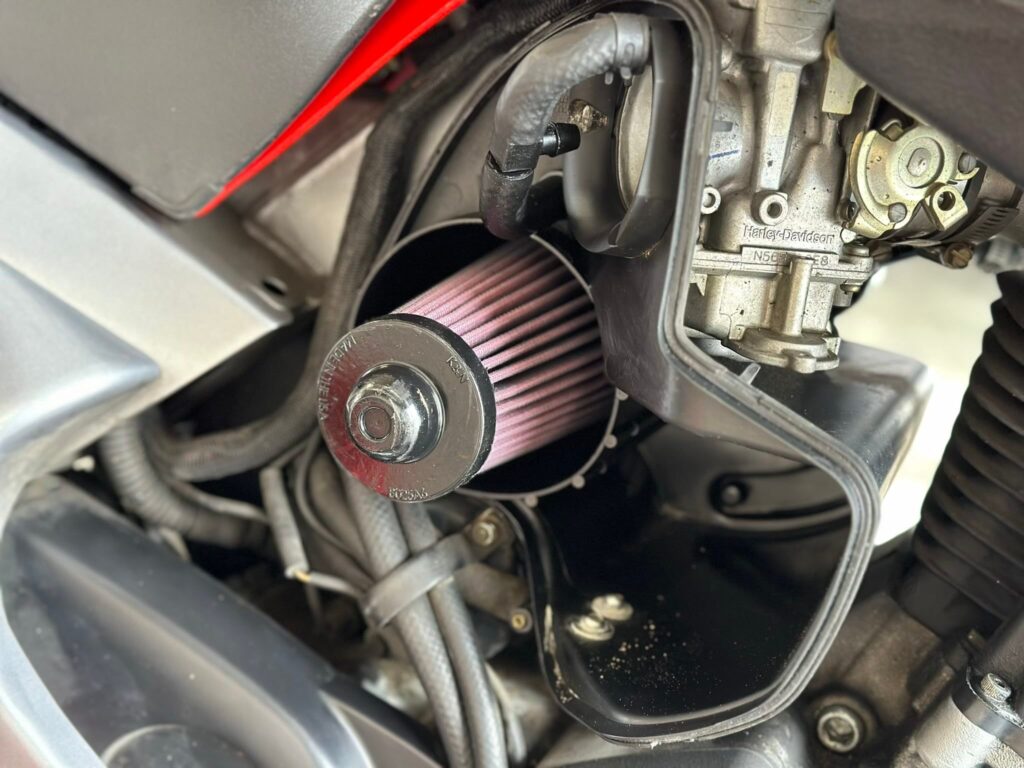
2. **Swap Out Air Filters**Imagine trying to run a marathon while breathing through a clogged mask. That’s essentially what happens to your engine when its air filter becomes dirty and restricted. A filthy filter starves the engine of the vital oxygen it needs, severely hampering efficient combustion. This diminished airflow forces the vehicle to work harder, burning more fuel than necessary and inevitably straining your wallet over time.
Replacing your engine’s air filter is one of the simplest, yet most impactful, maintenance tasks you can perform, typically requiring just about five minutes of your time. Start by popping the hood and locating the air filter box; it’s usually a plastic container secured with clips or screws. Open it up, carefully remove the old, grimy filter, and then simply insert a fresh one that matches the manufacturer’s specifications.
The benefits of a clean air filter are immediate and tangible. Proper air intake promotes smoother acceleration, restoring that crisp response you appreciate when you press the pedal. More importantly, it directly translates to better fuel economy, reducing the frequency of your trips to the gas station. It’s a small, inexpensive swap that delivers a surprising boost to your car’s overall performance and efficiency, often exceeding expectations for such a straightforward task.
Read more about: From Red Carpet to Real Life: Celebrities Who Disappeared from Hollywood and Thrived
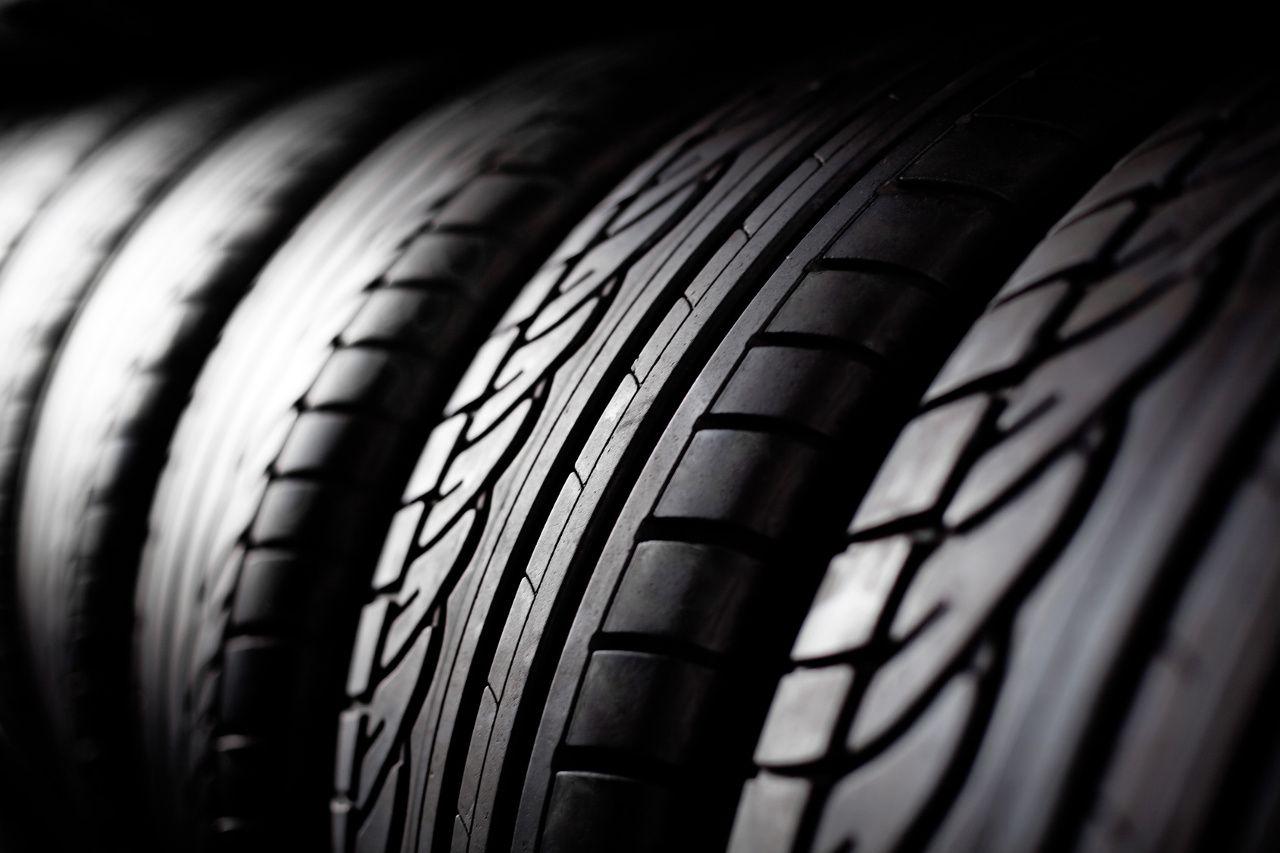
3. **Tire Pressure Checks**Your tires are the only point of contact between your vehicle and the road, making their condition absolutely critical for safety, performance, and efficiency. Many drivers underestimate the impact of proper tire pressure, yet it plays a pivotal role in everything from handling to fuel mileage. Under-inflated tires dramatically increase rolling friction, leading to rapid tread wear and forcing your engine to exert more effort, consuming more fuel.
Conversely, over-inflation also presents its own set of problems, often resulting in a noticeably bumpier ride and uneven wear patterns, particularly in the center of the tread. The goal is balanced tire pressure, which not only ensures stability and predictable handling on the road but also maximizes the lifespan of your tires and improves your fuel economy. This simple monthly check is a habit that pays dividends.
Checking your tire pressure is straightforward. Always use a reliable tire pressure gauge, whether it’s a digital or analog model, and take your readings when the tires are cold – before you’ve driven for any significant distance. Compare the figure on your gauge with the recommended PSI (pounds per square inch) found on a sticker usually located inside the driver’s door jamb, or in your owner’s manual. Then, inflate or deflate each tire until its pressure perfectly matches that specified figure.
Consistent monitoring of your tire pressure is a powerful preventative measure. It significantly reduces the risk of sudden blowouts, which can be extremely dangerous and costly. Furthermore, it helps your tires last longer by ensuring even wear across the tread. This straightforward habit is a surefire route to better handling, enhanced safety, and notably improved fuel mileage, making it a cornerstone of smart car maintenance.
Read more about: Buyer Beware: Decoding ‘High’ – 12 Intricacies That Forecast Maintenance Challenges
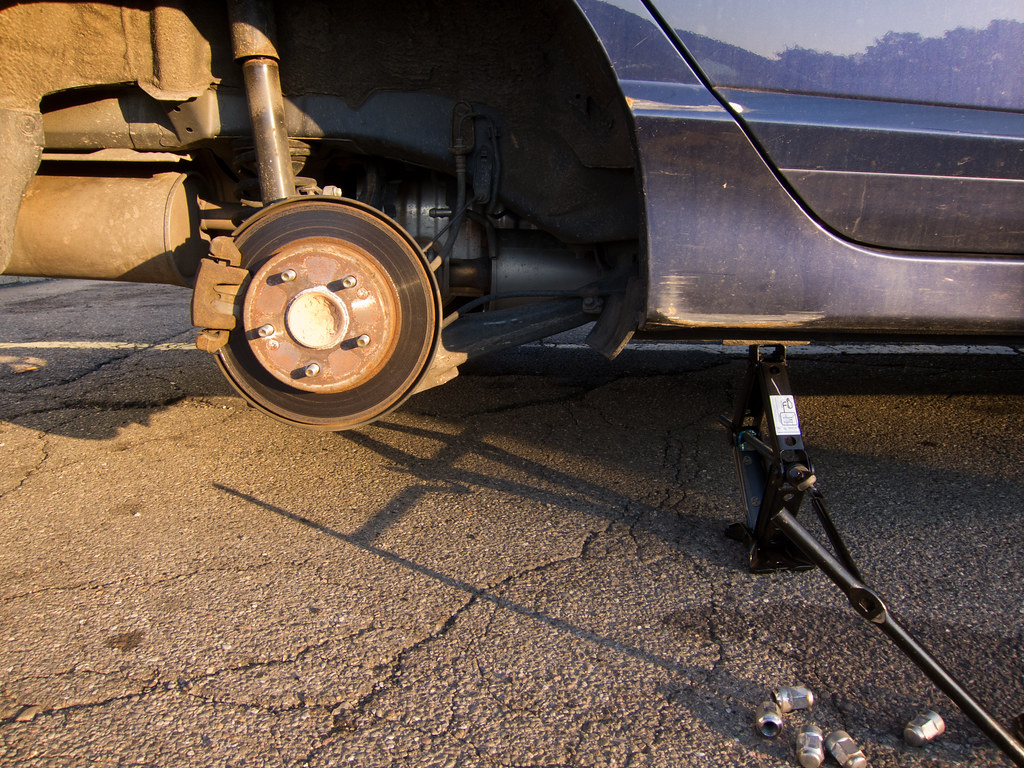
4. **Regular Tire Rotation**It might seem counterintuitive, but your vehicle’s wheels don’t wear out at an identical rate. The tires on the front axle, for instance, often endure more stress due to their involvement in steering, turning, and the majority of the braking force. This uneven wear can lead to premature replacement of individual tires or even an entire set, costing you a tidy sum long before their time.
The solution is simple: regular tire rotation. This practice systematically moves each tire to a new position on the vehicle, effectively spreading the wear evenly across all four tires. By doing so, you ensure that no single tire or pair of tires bears a disproportionate amount of stress, allowing them all to wear down at a more uniform rate. This proactive measure significantly extends the overall lifespan of your entire tire set.
To perform a tire rotation, you’ll first want to consult your owner’s manual for the correct rotation pattern specific to your vehicle. Patterns can vary from front-to-back, back-to-front, or even a crisscross method, depending on whether your car is front-wheel drive, rear-wheel drive, all-wheel drive, or has directional tires. Safely raise your vehicle using a jack and jack stands, then move each tire to its designated position as outlined in your manual.
Stretching the life of your tires through regular rotation is a highly effective way to save money. Nobody wants the expense and hassle of prematurely replacing an entire set of tires. Experts and reputable tire shops typically recommend rotating your tires every 5,000 to 7,000 miles, or as specifically suggested in your owner’s manual. This simple routine ensures maximum mileage from your investment, keeping you safer and your wallet happier.

5. **Wiper Blade Replacement**Driving in adverse weather conditions, be it a sudden downpour or a snowy commute, demands crystal-clear visibility. However, worn-out wiper blades are incredibly adept at doing the exact opposite – they create irritating arcs of smeared raindrops and streaks across your windshield. This significantly compromises your visibility, exponentially increasing the risk when the weather takes a turn for the worse. Fortunately, replacing these crucial components is a refreshingly simple task.
Even if your wiper blades appear fine at a glance, it’s wise to inspect them monthly. The rubber material is constantly exposed to harsh sunlight, extreme temperatures, and various weather elements, all of which can cause it to crack, harden, or fall apart over time. If your wipers are leaving behind streaks, missing spots, or making squealing noises when in operation, it’s a clear indication that they are no longer performing optimally and require attention.
Sometimes, a quick clean of the blades themselves with dish soap and water can resolve minor issues, as dirt and grime can accumulate and affect their efficacy. It’s also beneficial to wipe down the area where the wipers rest on your windshield, as debris can build up there too. However, if cleaning doesn’t eliminate the streaks or noise, a replacement is in order. Most wiper blades are designed for easy, tool-free installation.
The procedure for replacement is straightforward: simply lift the wiper arm away from the windshield, locate and press the small tab or release mechanism, and then slide the old blade off. A new blade will then snap into place until it locks securely. This five-minute task makes a world of difference. Clear vision is non-negotiable for safety on the road, and fresh wipers ensure your glass remains free of distracting streaks, keeping you safe and confident through rain or snow.
Read more about: 15 Vehicles Owners Wish They’d Never Bought: Your Essential Guide to Avoiding Automotive Regrets
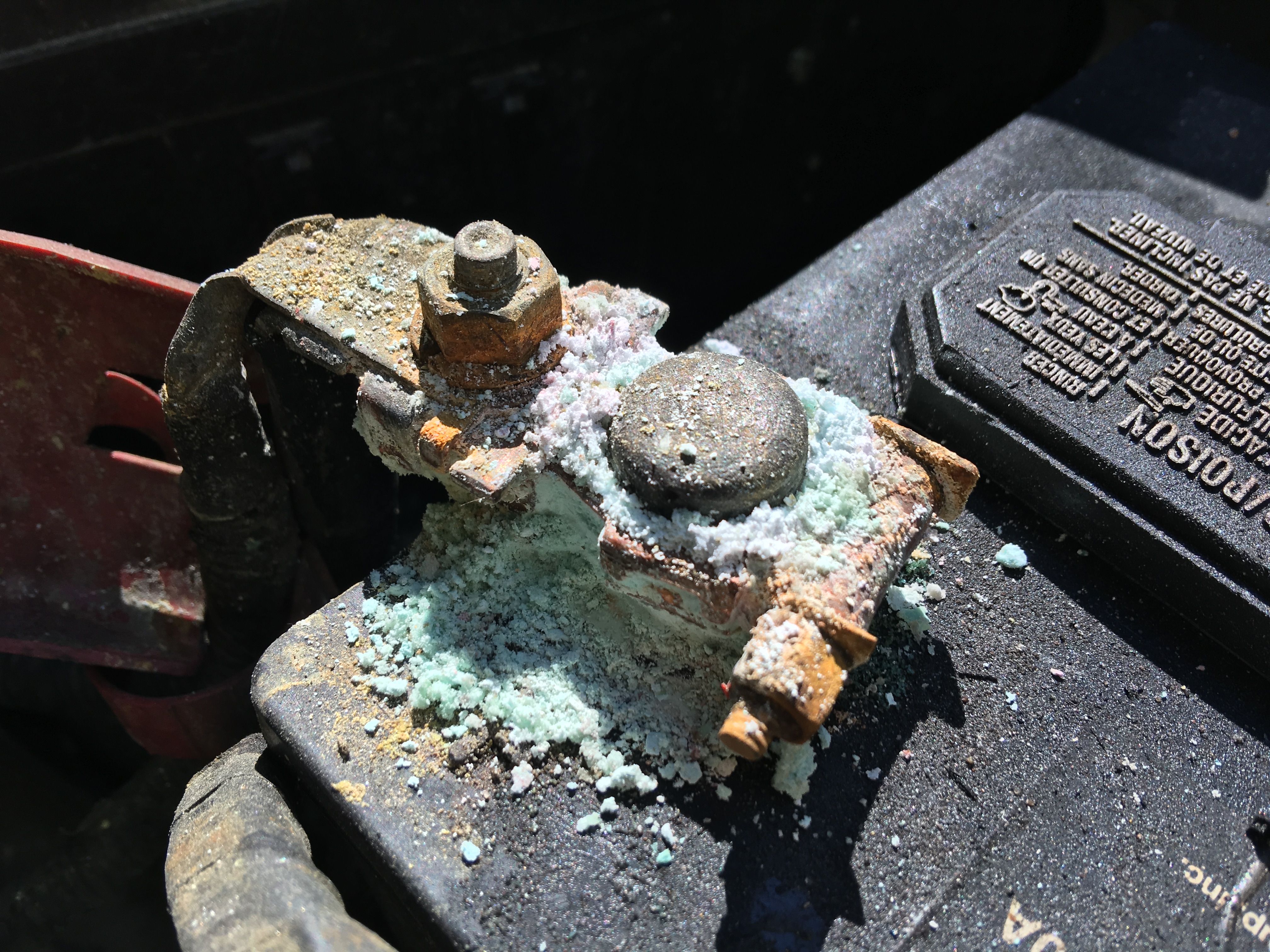
6. **Battery Terminal Cleanup**Your car’s battery is the heart of its electrical system, providing the crucial spark needed to get your engine running and powering all your vehicle’s electronic components. However, over time, fuzzy white or greenish corrosion can build up on the battery terminals. This seemingly minor issue often leads to frustrating slow starts, unpredictable electrical glitches, and can even prevent your car from starting altogether. A few minutes dedicated to cleaning these terminals can spare you immense headaches and inconvenience down the road.
Cleaning battery terminals is a simple DIY task that requires minimal tools and effort. First, for safety, always disconnect the negative cable first, followed by the positive cable. Next, prepare a simple paste using baking soda and water; this alkaline mixture effectively neutralizes the acidic corrosion. Using a wire brush, scrub the terminals thoroughly until all traces of corrosion are gone. Once clean, rinse the terminals with a little water and dry them completely.
Finally, reconnect the cables, ensuring the positive cable is attached first, followed by the negative cable. This specific order is important for safety. A clean, secure connection at the battery terminals ensures a steady and uninterrupted flow of electricity throughout your vehicle’s system. There’s truly nothing more aggravating than hunting for jumper cables on a frigid morning or awkwardly waiting for a random passerby to help jump-start your vehicle, all because of a preventable corrosion issue.
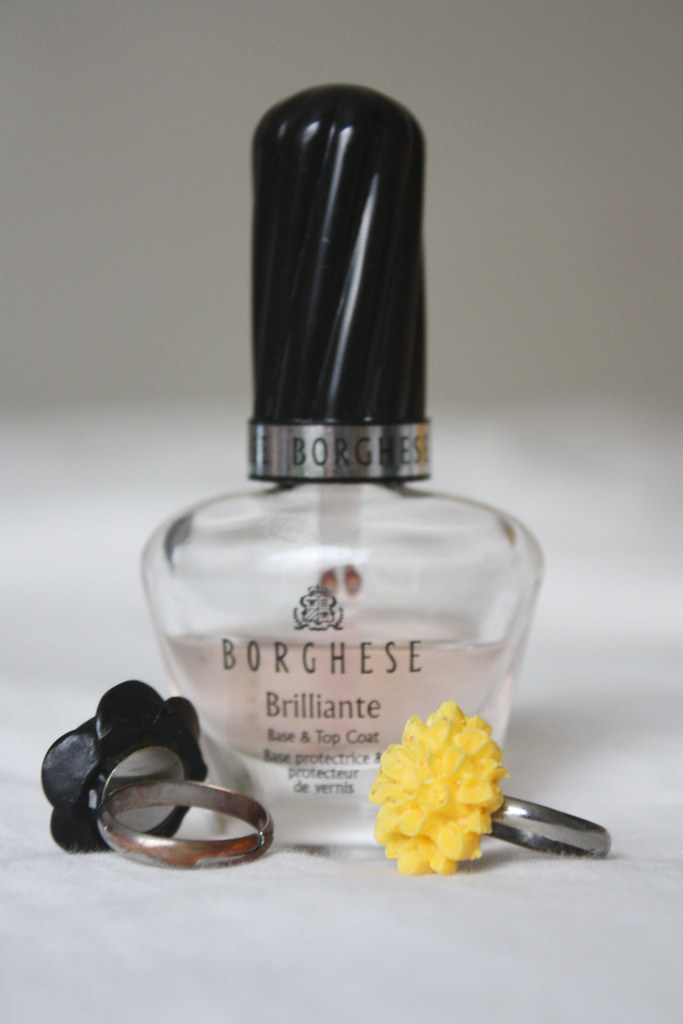
7. **Clear Nail Polish for Tiny Paint Chips**Even the most careful drivers can fall victim to tiny paint chips – those seemingly insignificant blemishes caused by flying road debris or small impacts. While they might appear trivial at first glance, these minor chips are more than just cosmetic imperfections; they expose the bare metal underneath your car’s paintwork. Once exposed, that metal becomes highly susceptible to moisture, creating a perfect breeding ground for rust, which can quickly spread and become a far more expensive problem to rectify.
Fortunately, there’s a surprisingly simple, temporary hack to protect these vulnerable spots: clear nail polish. This easily accessible household item can provide an effective, immediate seal against the elements, buying you precious time before a proper touch-up job can be arranged. It’s a practical, low-cost solution that helps to prevent a small chip from turning into a significant rust issue, preserving your vehicle’s body integrity.
The application process is straightforward. First, thoroughly clean and dry the chipped spot using mild soap and water. This ensures there’s no dirt or grease that could prevent the polish from adhering properly. Once the area is clean and dry, carefully dab a small amount of clear nail polish directly over the blemish, ensuring it covers the exposed metal. Allow it ample time to dry completely before taking your car out for a drive.
While clear nail polish is by no means a permanent solution or a substitute for professional paint repair, it serves as an excellent temporary barrier. It’s a decent trick to prevent moisture and oxygen from reaching the metal, effectively halting the onset of rust until you can perform a more durable touch-up. Remember, rust repair can be far more complex and costly than a quick trip to the drugstore for a bottle of polish, making this hack a smart interim fix to protect your investment.
Now that we’ve covered the core foundation of vehicle health, it’s time to shift gears and delve into some truly clever, often overlooked maintenance tips that can significantly enhance your driving experience and safeguard your investment. These aren’t just about preventing breakdowns; they’re about smart, practical hacks that keep your car running smoothly through every season, minimizing those unexpected repair costs that can quickly add up. From unexpected household items providing ingenious fixes to cultivating habits that extend the life of critical components, these next eight insights are designed to empower you to take even greater control of your car’s well-being. Let’s explore how these smart hacks can simplify your car ownership and keep your vehicle in peak condition for years to come.
Read more about: High Stakes & Silver Screens: Ranking the Top 12 Blackjack Movies of All Time for Every Fan
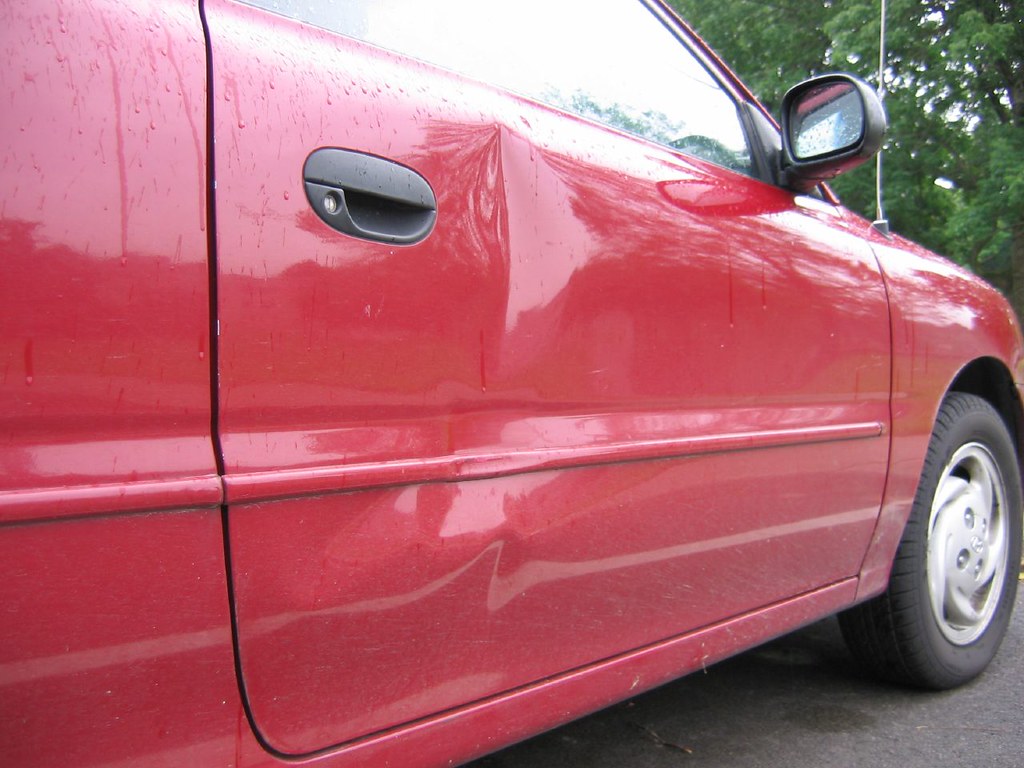
8. **Plunger Trick for Minor Dents**We’ve all been there: that minor dent from an errant shopping cart or a random mishap in a parking lot. These small dings might not seem like a big deal, but a trip to a body shop for even a tiny repair can quickly become a pricey affair. Before you resign yourself to an expensive fix or simply live with the imperfection, there’s a surprisingly effective household item that can sometimes work wonders: a simple toilet plunger.
This isn’t a magical cure-all for major collision damage, but for those annoying, shallow dents, a plunger can often provide a satisfying and inexpensive solution. The key lies in creating a strong vacuum seal over the dented area. When applied correctly, the suction and subsequent pull can gently coax the metal back into its original shape, or at least significantly reduce the dent’s visibility.
To try this hack, first, ensure both the dented area and the rim of your plunger are clean and slightly wet. This helps create a better seal. Position the plunger firmly over the center of the dent, pressing down to expel air and create strong suction. With a steady hand, gently pull the plunger straight back. You might hear a satisfying pop as the metal flexes. Repeat this process a few times, repositioning the plunger as needed, and observe the dent gradually diminish or even disappear. It’s incredibly rewarding to tackle these minor blemishes yourself and spare your wallet from a hefty repair bill.
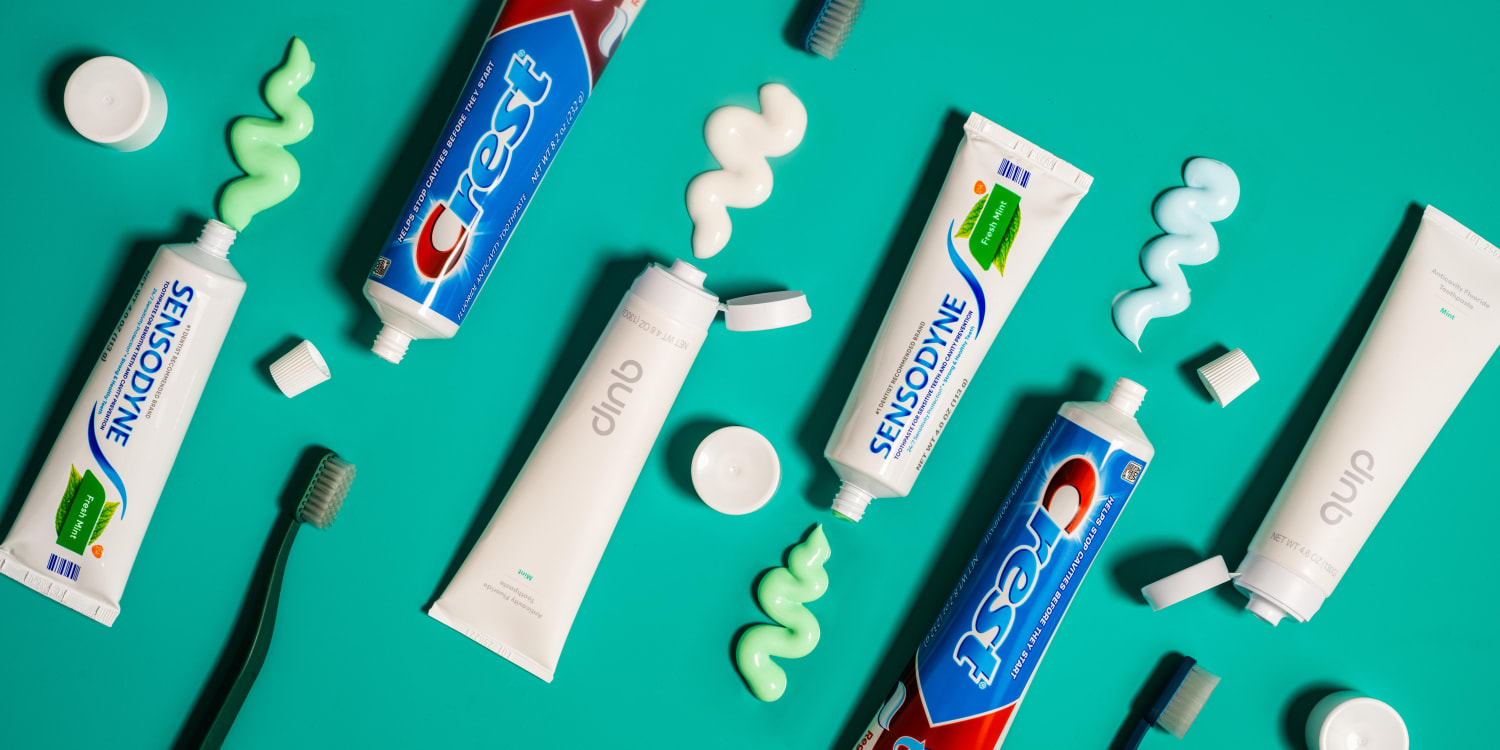
9. **Toothpaste on Foggy Headlights**Over time, your car’s headlight lenses can develop a cloudy or yellowed appearance, a common issue caused by years of exposure to UV rays and environmental grime. This oxidation isn’t just an aesthetic problem; it significantly diminishes your nighttime visibility, making driving after dark considerably more hazardous. Before you consider expensive headlight replacement or professional restoration, an ordinary tube of toothpaste might just be your secret weapon.
Believe it or not, many common toothpastes contain mild abrasives, similar to the polishing compounds found in dedicated headlight restoration kits. These fine particles are just aggressive enough to gently scrub away the hazy layer of oxidation without damaging the polycarbonate lens underneath. It’s a remarkably simple, low-cost solution that can yield surprisingly effective results, restoring much-needed clarity to your headlights.
The application process is straightforward and requires minimal effort. Begin by thoroughly cleaning the headlight lens with soap and water to remove any surface dirt or debris, then dry it completely. Squeeze a generous dollop of toothpaste directly onto the lens. Using a soft cloth or a microfiber towel, rub the toothpaste into the headlight in circular motions for a couple of minutes, applying moderate pressure. You’ll likely see a yellowish residue coming off onto your cloth, which is the oxidized layer.
Once you’re satisfied, rinse the headlight thoroughly with water to remove all toothpaste residue, and then dry it with a clean microfiber towel. While results can vary depending on the severity of the clouding, you’ll often notice a significant improvement in clarity. For an added layer of protection and to slow future oxidation, consider applying a UV-protective sealant afterward. This quick hack can dramatically improve your visibility and the overall appearance of your vehicle, all for the cost of a tube of toothpaste.

10. **Cooking Spray on Door Seals**Winter weather brings a host of challenges for car owners, and few are as frustrating as wrestling with a car door that’s frozen shut on a frigid morning. The rubber seals around your vehicle’s doors can easily trap moisture, which then freezes solid, effectively gluing your doors closed. This common nuisance can turn a simple morning routine into an icy fiasco, but there’s a simple kitchen staple that offers a surprisingly effective solution: cooking oil spray.
This isn’t just a random kitchen tip; it’s a practical hack that creates a barrier between the rubber seals and any moisture, preventing it from freezing. The oil repels water, making it difficult for ice to form a strong bond. It’s a safe and easy way to ensure your doors open smoothly, even when temperatures plummet, saving you from a wrestling match with your vehicle before your morning coffee has even kicked in.
To apply this preventative measure, first, make sure your door seals are clean and dry. Then, spray a small amount of cooking oil onto a paper towel. Gently wipe the oil-laden paper towel along the entire length of the rubber seal on each of your car’s doors. Ensure you cover the entire surface, but avoid overspraying onto the car’s paintwork. A thin, even coating is all that’s needed to do the trick.
This application typically lasts through several washes and most cold snaps, but it’s a good idea to reapply it after a thorough car wash or during periods of frequent snowfall or freezing rain. This simple, inexpensive hack can genuinely make your cold-weather driving experience far more pleasant and less prone to frustrating delays. Smoothing those seals keeps your daily routine from turning into an icy ordeal, making cooking spray an unexpected hero in your winter car care arsenal.
Read more about: For Real, What’s Up? 15 Formerly Beloved American Eats That Have Quietly Disappeared from Our Plates

11. **Keeping It Clean**It might seem obvious, but the simple act of regular cleaning—both inside and out—is one of the most underrated maintenance hacks for extending your car’s life and preserving its value. Many drivers view washing and tidying as purely cosmetic, but built-up grime, dirt, and debris can actively contribute to corrosion, wear and tear, and a rapid decline in your vehicle’s overall condition faster than you might imagine.
Let’s start with the exterior. Regular washing, especially paying attention to the wheel wells and undercarriage, is crucial. Road salt, mud, and other environmental contaminants are highly corrosive and can eat away at paint, metal, and critical components. Thoroughly washing and then drying your car prevents water spots and significantly slows the onset of rust, particularly in areas less visible but highly vulnerable. It’s an easy way to protect the integrity of your car’s bodywork.
Moving inside, a tidy interior accomplishes much more than just a pleasant aesthetic. Vacuuming floors and seats regularly removes dirt, grit, and food crumbs that can grind into fabrics or leather, leading to premature wear and tear. Wiping down dashboards, door panels, and center consoles clears dust and debris that can accumulate in vents, buttons, and seams, potentially affecting electronics and reducing the lifespan of interior materials.
A clean vehicle isn’t just about appearances; it directly impacts longevity and resale value. A well-maintained interior extends the life of upholstery and cabin components, while a spotless exterior preserves the paint finish and prevents premature rust. Beyond the practical benefits, a clean car also makes the daily commute more enjoyable for both drivers and passengers, fostering a sense of pride in ownership and a more relaxed driving environment. This consistent attention to cleanliness is a simple yet powerful investment in your vehicle’s future.
Read more about: A Perilous Miscalculation: When Pirates Attacked the Unyielding Power of Warships and Faced Swift Defeat

12. **Monitor Brake Pads**When it comes to vehicle safety, your car’s braking system is paramount. Specifically, the condition of your brake pads is a non-negotiable aspect of maintenance that directly impacts your ability to stop effectively and safely. Ignoring worn brake pads can quickly lead to dangerous situations, compromised stopping power, and much more expensive repairs involving other brake components like rotors and calipers. It’s crucial to proactively monitor their condition.
One of the most common and earliest indicators of worn brake pads is an audible warning. Listen carefully for any squealing or rubbing noises when you apply the brakes. Most brake pads are equipped with a built-in wear indicator – a small metal tab that makes contact with the rotor when the pad material gets too thin, producing that distinctive high-pitched squeal. This sound is your car’s way of telling you it’s time for new pads, and it should never be ignored.
Beyond listening for sounds, you can also visually inspect your brake pads. While it might require a flashlight and a careful peek through the wheel spokes, you can often gauge the thickness of the pad material. If the pad appears to be a quarter-inch thick or less, it’s a clear signal that replacements are due. Remember, the goal is to replace pads before they wear down to the backing plate, which would cause direct metal-on-metal contact and severely damage your rotors.
Promptly addressing worn brake pads is an investment in your safety and your budget. Don’t wait for that dreaded metal-on-metal grinding sound, which indicates significant damage is already occurring. Timely pad replacements protect your rotors from scoring, prevent more complex (and costly) caliper issues, and, most importantly, ensure your vehicle maintains optimal stopping power when you need it most. Prioritizing brake health keeps you safer on the road and helps you avoid unexpected financial burdens.
Read more about: Unleash Your Inner Explorer: The Top 11 Expedition and Camping Vehicles for Ultimate Adventures

13. **Windshield Covers for Winter**For anyone living in a cold climate, the daily ritual of scraping ice and frost off the windshield is a miserable, time-consuming chore. Frozen fingers, limited visibility, and the constant battle against stubborn ice can make even a short commute feel like an ordeal. Thankfully, there’s a simple, inexpensive solution that can significantly cut down on this winter morning hassle: a windshield cover.
Investing in a quality windshield cover is a practical step that streamlines your cold-weather routine and protects your vehicle. These covers act as a physical barrier, preventing snow, ice, and frost from accumulating directly on your windshield glass. Instead of chipping away at a solid sheet of ice, you simply remove the cover, and your windshield is largely clear and ready to go, saving you valuable time and effort.
Using a windshield cover is straightforward. Before you leave your car overnight, simply place the cover over your entire windshield. Most covers come with various attachment methods, such as elastic straps that hook around your side mirrors, flaps that get tucked into your car doors, or magnets that secure it to the car’s body. Choose a model that fits your vehicle snugly to ensure maximum protection against the elements.
This small investment can make a substantial difference in your winter mornings. No more frozen knuckles or shivering in the cold while you painstakingly clear your view. A windshield cover transforms that frustrating chore into a quick, easy task, allowing you to get on the road faster and more comfortably. It’s a smart addition to any winter car care kit, truly enhancing your daily driving experience during the colder months.
Read more about: 14 ‘Must-Have’ Car Features That Are Actually Useless: A Lifehacker’s Guide to Smart Automotive Choices

14. **Gentle Driving Habits**While much of car maintenance focuses on specific parts and preventative measures, one of the most impactful and often overlooked hacks lies in how you actually drive your vehicle. Aggressive driving habits—think sudden accelerations, hard braking, and rapid turns—put immense stress on your car’s critical components, leading to faster wear and tear, and ultimately, more frequent and costly repairs. Adopting a gentle driving style is a free, powerful way to extend your car’s life and save money.
Every time you stomp on the accelerator or slam on the brakes, you’re subjecting your engine mounts, suspension, brake pads, rotors, and even your tires to significant forces. These sudden stresses cause components to wear out prematurely, leading to a cascade of potential issues. Smooth, controlled inputs, on the other hand, allow your vehicle’s systems to operate within their designed parameters, minimizing strain and maximizing longevity.
Consider these tips for a gentler approach: accelerate smoothly and gradually, rather than flooring it, to reduce stress on your engine and transmission. Brake gradually and anticipate stops, allowing more time to slow down, which significantly extends the life of your brake pads and rotors. On highways, maintaining a steady speed not only saves wear but also boosts your fuel efficiency by avoiding constant speed fluctuations.
A calm driving style is a win-win situation. It prevents premature component failure, reducing your need for frequent repairs, and it also fosters a far more relaxed and enjoyable driving experience. Let other drivers rev their engines at every stoplight and suffer the mechanic’s bills that inevitably come with such habits. By simply being more mindful and gentle behind the wheel, you’re actively contributing to your car’s health and your own financial well-being, proving that sometimes, the best hacks are about habit, not hardware.
Read more about: Used Hybrid Battery Reliability: Decoding 10 Models – The Ones That Endure and the Ones That Don’t
15. **Lubricate Door and Window Seals**Your car’s rubber seals around doors and windows play a vital role in keeping your cabin quiet, comfortable, and dry. However, these seals are constantly exposed to the elements – sun, rain, extreme temperatures – which can cause the rubber to degrade, become brittle, or even crack over time. This degradation can lead to annoying squeaks, increased wind noise inside the cabin, and, most importantly, water leaks that can damage your car’s interior. Regular lubrication is an easy and effective way to maintain their flexibility and integrity.
Your car’s rubber seals around doors and windows play a vital role in keeping your cabin quiet, comfortable, and dry. However, these seals are constantly exposed to the elements – sun, rain, extreme temperatures – which can cause the rubber to degrade, become brittle, or even crack over time. This degradation can lead to annoying squeaks, increased wind noise inside the cabin, and, most importantly, water leaks that can damage your car’s interior. Regular lubrication is an easy and effective way to maintain their flexibility and integrity.
Just like any other rubber component, these seals benefit from periodic conditioning. A silicone or rubber lubricant helps to keep the material supple, preventing it from drying out, cracking, or sticking. By ensuring the seals remain pliable, you’re not only eliminating those irritating noises but also maintaining their crucial function of sealing out moisture and external noise, preserving the quiet comfort of your car’s interior.
The application process is very simple and takes just a few minutes. First, ensure the rubber seals are clean and dry. Then, spray a small amount of silicone-based or rubber-specific lubricant onto a clean cloth. Wipe the cloth along the entire perimeter of each door and window seal. Make sure to get into all the crevices and corners. After application, use a separate, clean cloth to wipe off any excess residue to prevent it from attracting dust or getting onto your clothing.
This small effort yields significant benefits. Quiet doors and properly sealing windows prevent disruptive wind noise from entering the cabin and, more importantly, keep out unwanted moisture that could lead to mold, mildew, or damage to your car’s upholstery and electronics. Maintaining these seals is a simple yet effective hack that preserves the cabin’s comfort level, particularly enhancing the driving experience in older models and protecting your vehicle’s interior against the relentless assault of the elements.
Read more about: The Unseen Value: 9 Classic Cars That Demand Storage Over the Open Road for True Enthusiasts
By embracing these smart maintenance hacks, you’re not just performing routine tasks; you’re adopting a proactive mindset that transforms car ownership from a potential money pit into a source of confidence and savings. From simple household items that fix minor cosmetic flaws to conscious driving habits that extend the life of crucial components, each tip empowers you to safeguard your investment. A few minutes here and there can truly save you thousands in the long run, ensuring your vehicle remains a reliable, efficient, and enjoyable companion on every journey. So, roll up your sleeves, apply these insights, and enjoy the open road with peace of mind, knowing you’ve mastered the art of smart car care.




